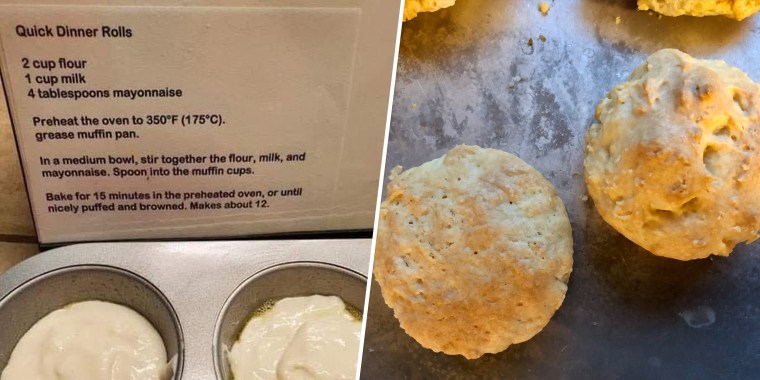Contrary to popular belief, mayonnaise is not a food group. It just might be the key to the easiest dinner roll in history, though.
There’s no worse feeling than realizing you forgot an important ingredient for your holiday table, but with a little ingenuity, most errors are recoverable. Dinner rolls, however, require hours of kneading and rising. Is there any hope for a lightning-fast, pantry-based replacement when the turkey is done and the stores are closed? I came across this recipe in two different recipe-sharing groups last week. It sounds too good to be true, but it reminds me of Depression- and wartime-era recipes for cakes when staple ingredients were often in short supply, like wacky cake or mayonnaise cake. Those recipes sound awful but yield excellent and thrifty results. Does this one take the cake?
There are some problems with the recipe as written. It doesn’t specify that it requires self-rising flour for leavening, and the baking temperature seems unusually low. It also doesn’t give any advice about shaping or whether to grease the pan. Let’s see whether we can muddle through and get something worthy of turkey day.
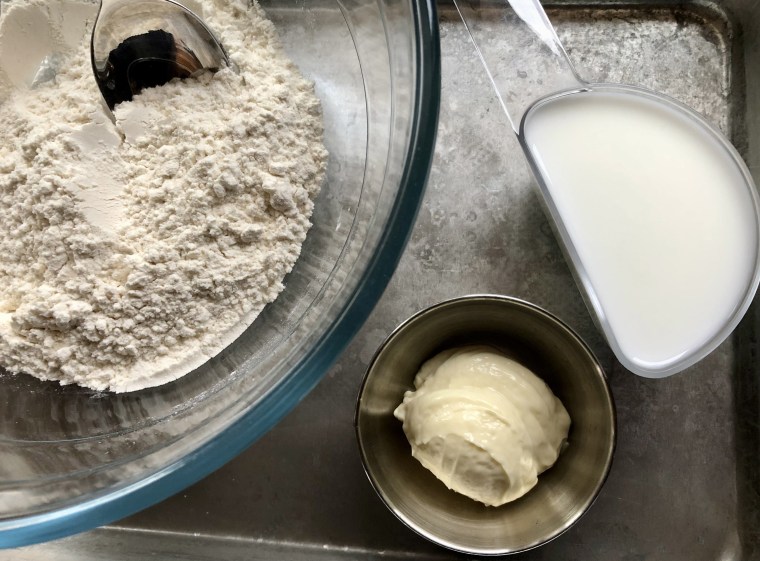
The ingredients for 12 rolls could not be easier: 2 cups self-rising flour, 1 cup milk and 4 tablespoons mayonnaise. For this test batch, I halved the recipe with no problem. No self-rising flour on hand? Just add 1/4 teaspoon of salt and 1½ teaspoon baking powder per cup of all-purpose flour. The directions didn’t say anything about making a well in the flou, or mixing wet ingredients separately, so against my better judgment, I just threw everything in there.
Like any un-yeasted quick bread, it’s best not to stir too much, lest your dough end up tough and your leavening flattened. You’ll get a very sticky, lumpy batter-like dough, with bubbles forming right away.
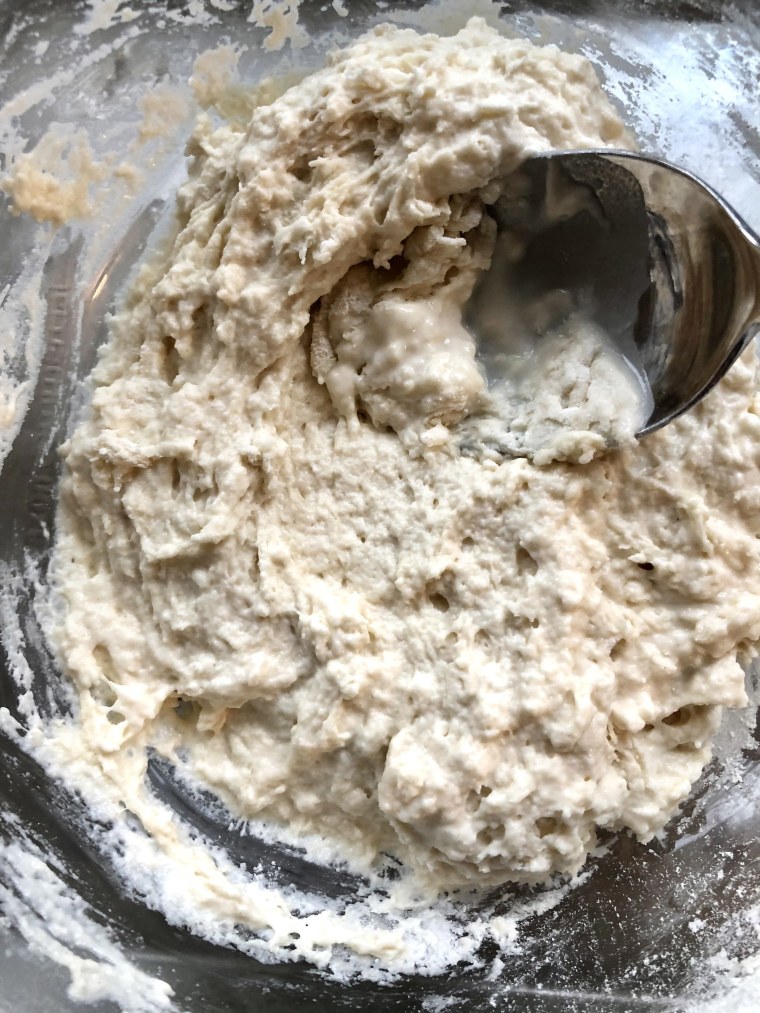
The original recipe calls for spooning the batter into muffin cups, and I tried a couple of those, but I also tried a buttered madeleine pan to see whether I could get something a little more polished-looking, in principle. I put half a pat of butter in each well because I knew sticking would otherwise be a problem, and put the pan in the oven for a few minutes to melt before filling.
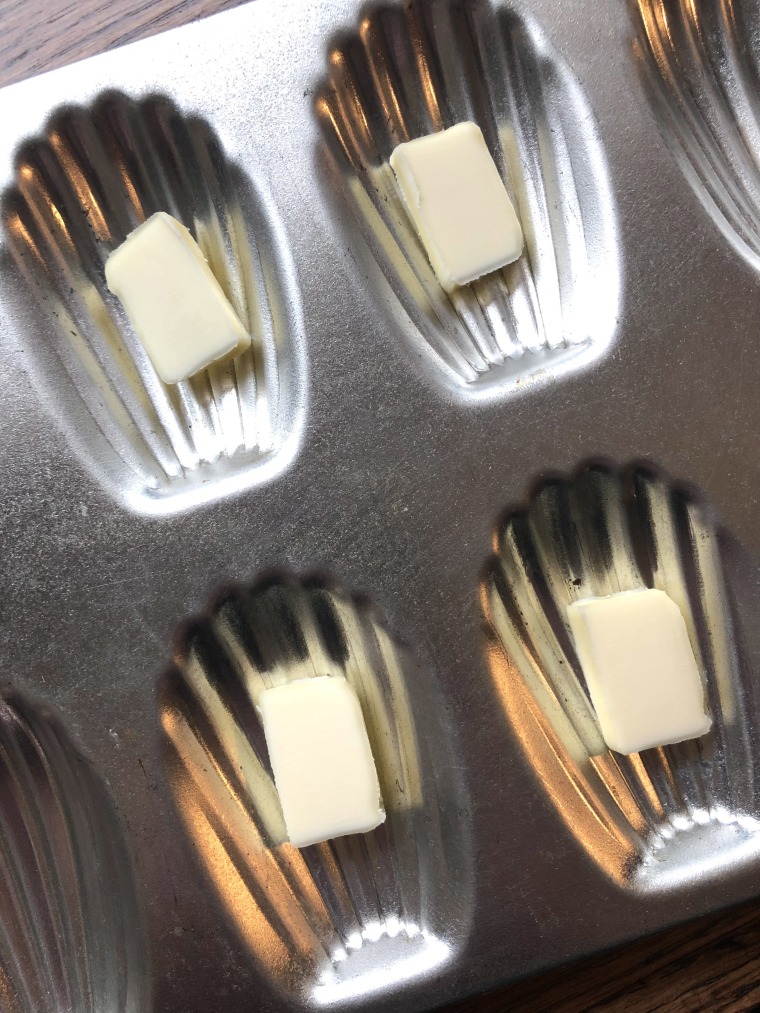
This batter defies shaping, so I used a method technically referred to as “blopping.” You take a spoonful of batter and scrape it off using a second spoon so that it blops into the well, and then you leave it there. I tried patting the tops of some of them with wet fingers to smooth it out, the way you might do with macaron batter, but as you’ll see, it didn’t make much difference. I also brushed one of them with butter to see whether it helped with browning.
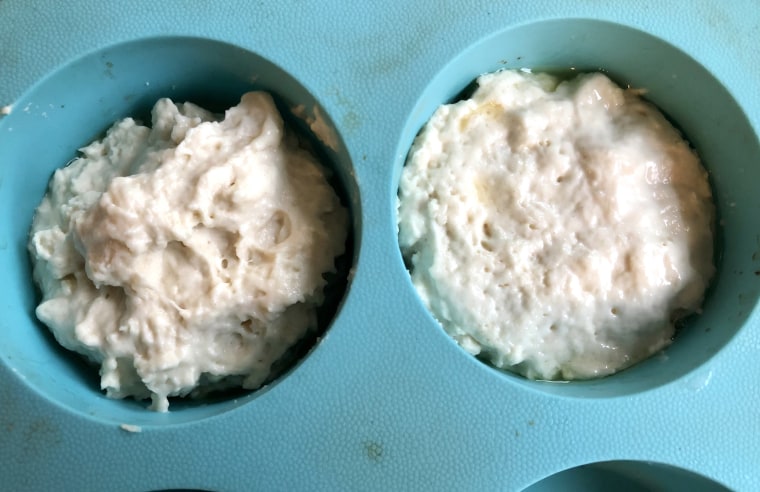
I started out with the oven at 350 F as instructed, but it quickly became clear there was no way they would brown at that low temperature within 15 minutes. I turned the oven up to 450 F as instructed in other recipes with a similar batter texture, and that did the trick. If you start at 450 F from the beginning, it might only take 12 minutes or so, especially in metal pans. Silicone ones like the muffin pan I used take longer to brown.
The ones I patted smooth look a little more refined, but the more irregular, rustic ones look great too, in my opinion. They all browned well — brushing with butter didn’t do much aesthetically, and they are already buttery on the bottom, so consider it an unnecessary step. The shaped pan is unnecessary, too; all those lovely little bubbles obscure the fancy decoration. My silicone muffin pan popped out perfect cylinders, but traditional angled muffin sides would be just as beautiful. The photos actually don’t do them justice. They have an almost translucent cap, with lots of crispy bubbles and a crunchy but delicate crust.
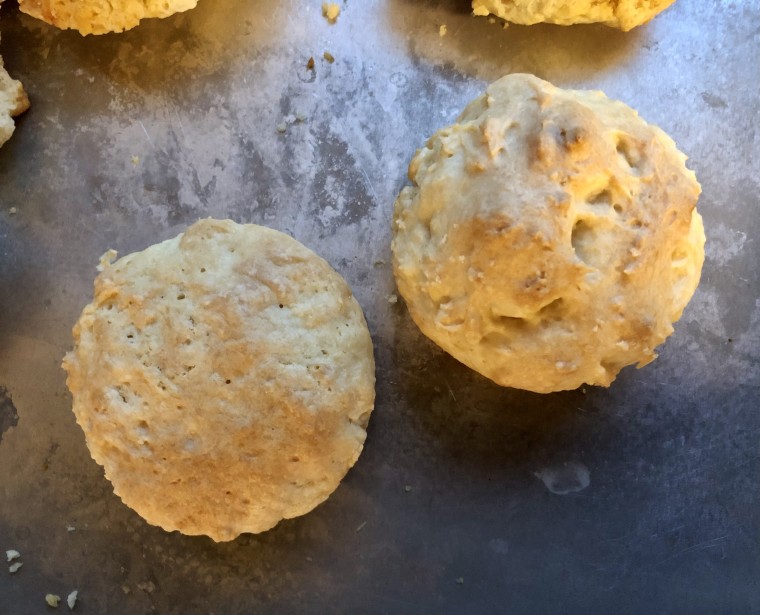
Inside, they’re fluffy, baked through and not at all oily. They smelled like mayo right out of the oven, but you’d never know it from the flavor. It’s a bit flat, but a dab of extra salt would fix that, and there’s no weird mayo tang at all. They would be the perfect neutral foil for anything from sausage gravy to tomato soup, and I’ll bet some cheddar and garlic would result in a convincing Red Lobster Cheddar Bay Biscuit dupe.
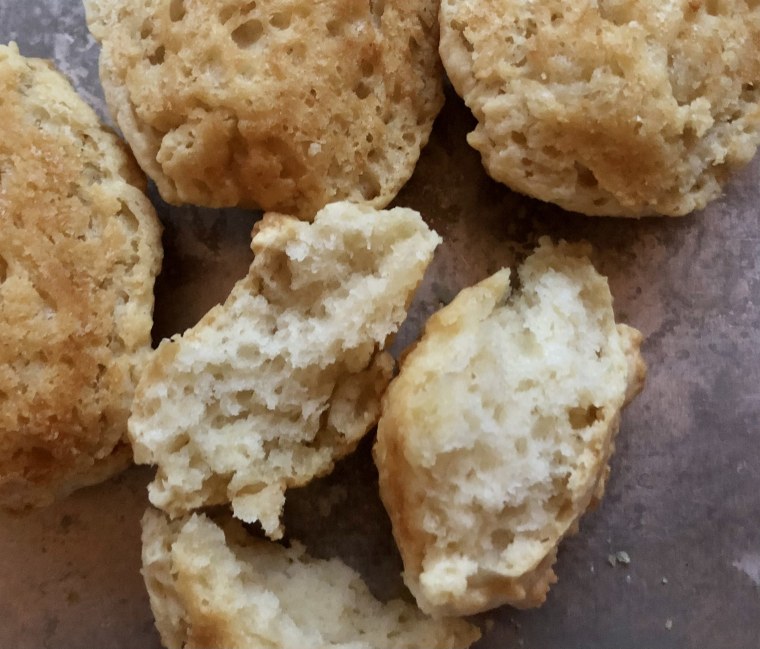
I really like these, and the ease of prep can’t be beat. However, “roll” is a misnomer. There’s no yeast flavor and very little glutenous chew. These are biscuits, not dinner rolls. Still, if you forgot the rolls this Thanksgiving, these would work just fine with turkey gravy. It’s a winner on many levels.
So, where has this recipe been all my life?
When I went digging, I found several alternate versions, and that usually means it has been around a while. Beloved Southern condiment brand Duke’s has its own version with (surprise!) double the mayo (and they're more appropriately called "drop biscuits"). Some add a little sugar or more milk. A quick peek at TikTok led me to Tennessee’s Caitlyn Maas, personal chef, cookbook author and Southern cooking maven. Her blog, Geraldine + Virginia, is named after her grandmothers, and she told me it was her Grammy Virginia who taught her this recipe. Her family has used it for decades, adding things like herbs, cheese and even chocolate chips! But Maas didn’t have further details about its ultimate origin.
Enter Douglas Mack, food historian and author of the invariably fascinating Snack Stack newsletter. The earliest mention he and his legendary research skills could find is from 1964, in the News and Observer from Raleigh, North Carolina.
“Note that the writer says the recipe is ‘going around,’” he tells me, “which indicates it was on-trend among local home bakers. The same recipe, or very similar ones, appeared in newspapers in Georgia, Louisiana, and Tennessee over the next four years.” From there, he found, it started showing up in church cookbooks, handed person to person, and it spread throughout the South. “Old school viral recipes! Oh my goodness!” says Maas. “She was from this area (and) an avid clipper and collector of recipes, so that makes sense!”
This kind of epic recipe journey through the ages is what I live for. Looking at all these versions made me wonder which is best, so I tried one more batch, changing the ratios around.
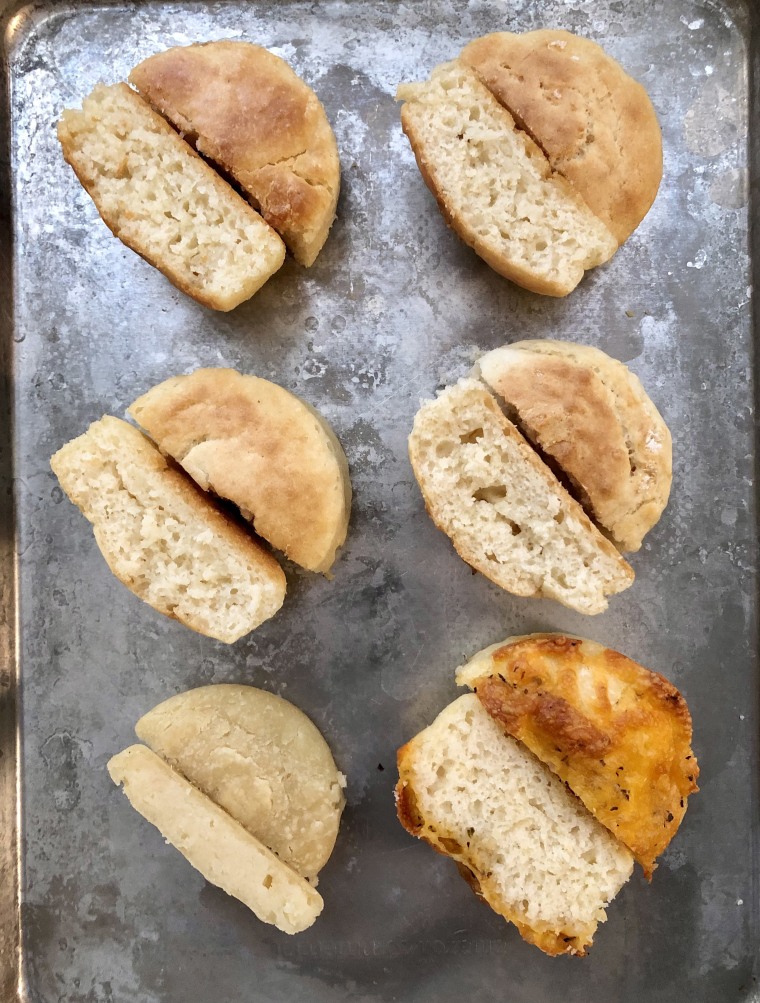
I tried Duke’s recipe with double the mayo, shown top left, and it was probably the most beautiful. It’s heavier, though, with an almost oily texture. At top right is the 1964 recipe Mack found, with half the mayo. That version is a little drier, slightly chewy, but almost as good as the first batch, so don’t fret if you only have a tablespoon of mayo on hand, or if you’d like to cut a few calories. Some recipes (like Maas’ Grammy Virginia’s) call for 2/3 cup of milk per cup of self-rising flour. That one, middle left in the photo, doesn’t rise as much, but is very moist without being oily, and the top is effortlessly uniform. Middle right is one baked without oiling the tin. With the silicone wells, it didn’t stick, but it certainly might in a metal pan, and it rose unevenly. It also lacked the buttery crunch of the other versions. At bottom left is one made with all-purpose flour instead of self-rising, since the original recipe I found didn’t specify. I didn’t think it would work, and it definitely did not. It’s the only abject fail of the lot. Bottom right is topped with cheddar and herbs, and as suspected, it is the easiest stand-in for Red Lobster’s Cheddar Bay Biscuits I’ve ever had the pleasure of inhaling whole while standing in the kitchen in my bathrobe.
The relative success of this crazy recipe of pre-internet viral propagation makes me wonder what’s next for condiment-based holiday recipe rescue. Mustard-y green bean casserole? Ketchup and gherkin stuffing? Barbecue sauce gelatin mold?
Oh sure, you can laugh, but that last one? It already exists. Maybe not every vintage recipe is worth saving.
